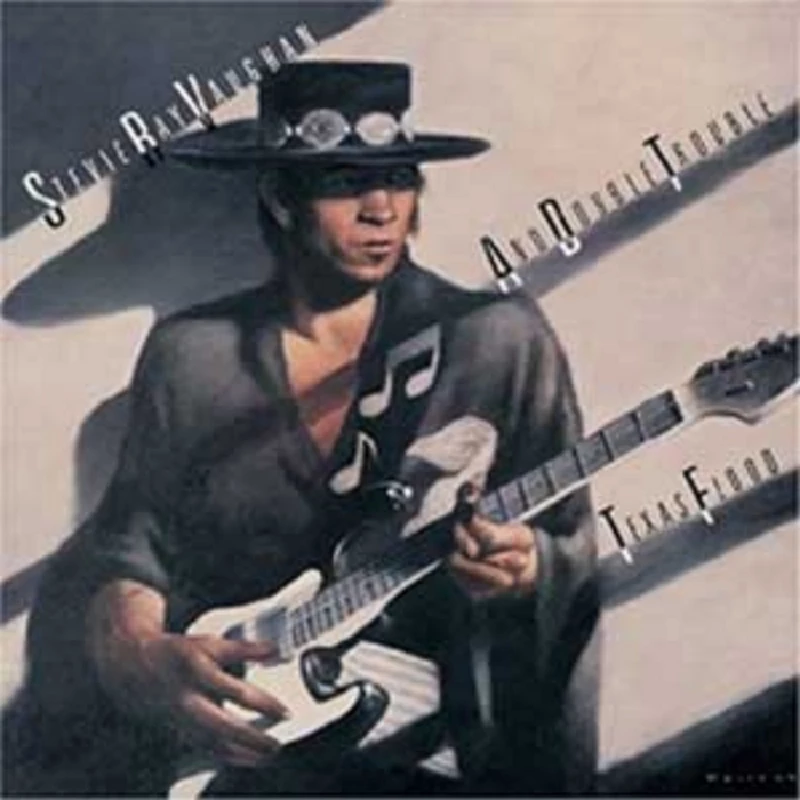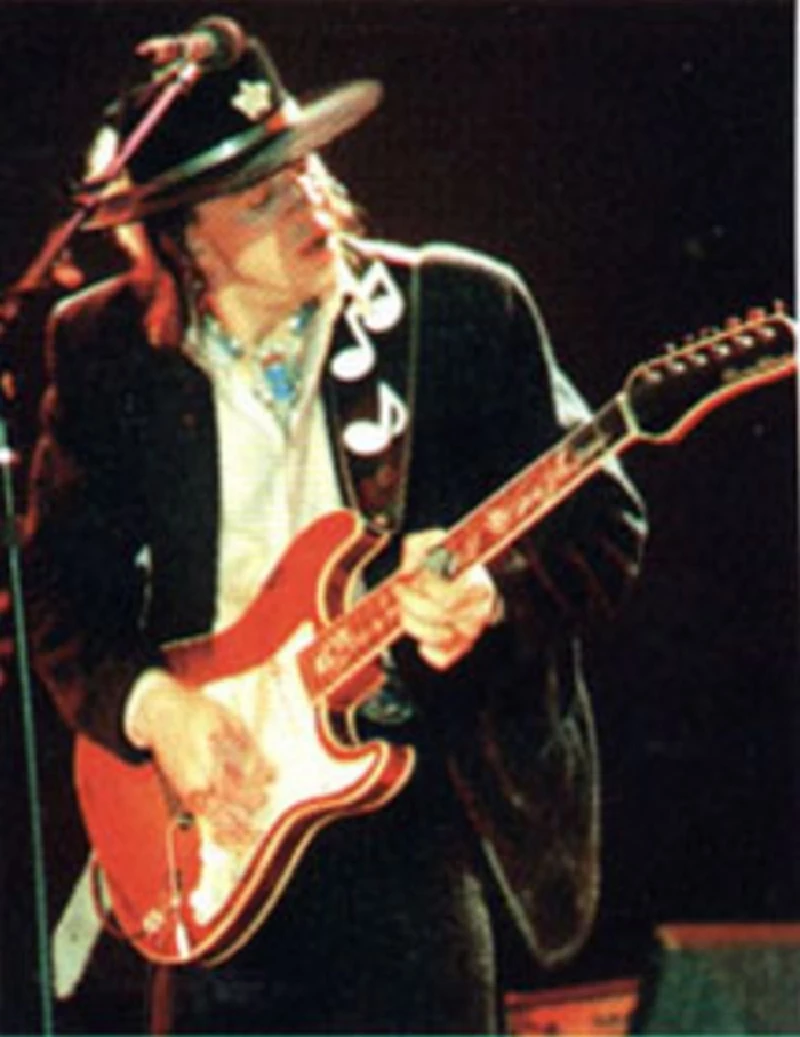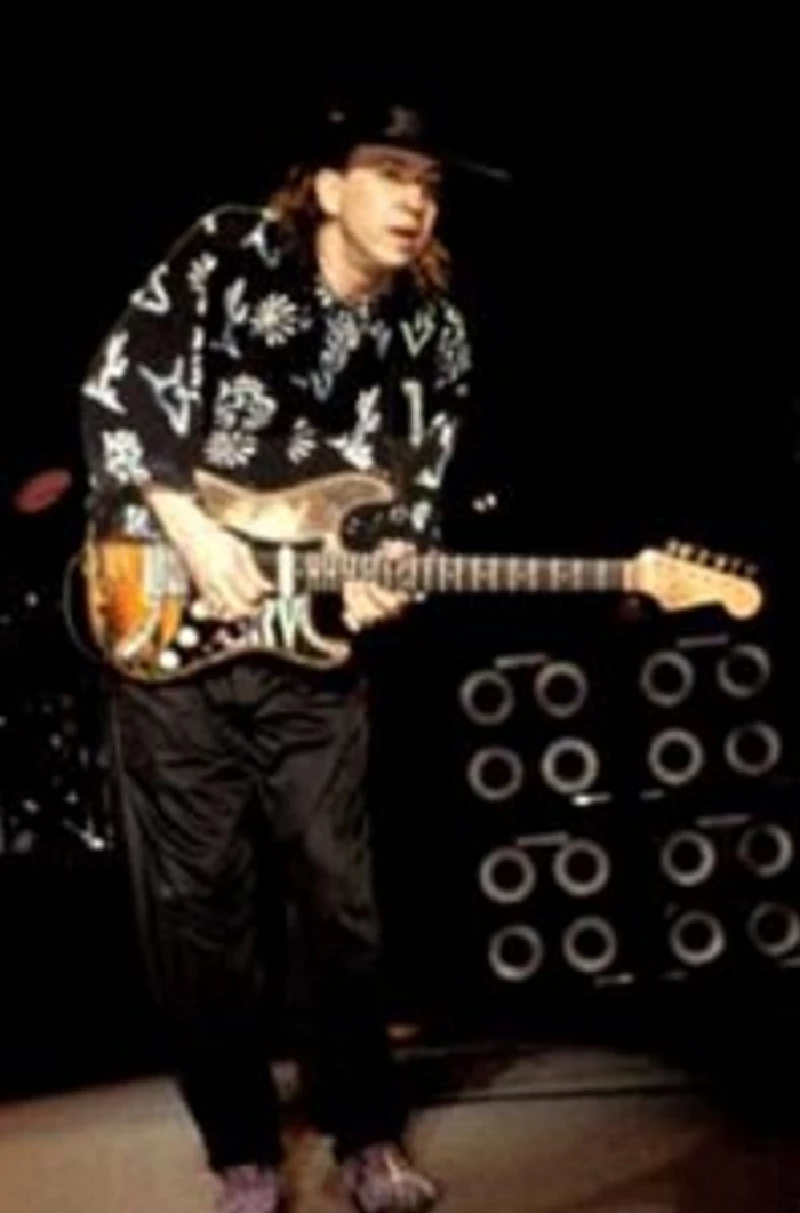Stevie Ray Vaughan - Texas Flood
by Sarah Mwangi
published: 16 / 6 / 2007

Label:
Select Label
Format: N/A
intro
In our 'Re : View' column in which our writers re-examine albums from the past, Sarah Mwangi looks at Stevie Ray Vaughan's 1983 first studio album, 'Texas Flood', which single-handedly revived the blues genre
I first came across Stevie Ray Vaughan when I was in my guitar instrumental phase. I would tirelessly listen to Steve Vai, Joe Satriani and Jimi Hendrix (of course) whilst scouring for more artists who knew what the guitar was really made for. During my searches I had gathered many artists and songs that took the guitar to its elements but I never delved deeper than the suggested song. That was until I stumbled across a case-less copy of 'Texas Flood' in the bargain bin in Fopp. For just £3, I had to buy it. I had never listened to Stevie Ray Vaughan before, so when I pressed play I must say I was disappointed. I thought guitars were going to be blazing my ears off. Instead there was this steady rhythmic blues riff meandering through the song whilst Vaughan sang about his new love. I didn’t know the blues. I wasn’t ready for the blues and so I dismissed the CD. Unfortunately for me, the album went unheard for a couple of months, until I bought a new MP3 player. Once every CD I owned was in my MP3 player and the shuffle button was on, I listened to whatever came my way. That’s when Stevie Ray Vaughan started making his rounds, first with ‘Rude Mood’. Nominated for a Grammy for Best Rock Instrumental Performance, 'Rude Mood', is a fast-paced blues shuffle. Vaughan’s light fingers race through this near five minute song as the bass and drums try to keep up. It’s a song that flirts with the virtuoso title, playing in and out of melodies and you’ll be damned if you try and keep that foot from tapping along. It is important to approach 'Texas Flood' as a blues guitar album. Ignore the lyrics, forget the vocals; like everything else, they are an accompaniment to Vaughan’s playing, (just something between the breathtaking solos). If you approach it in any other way, only heavy machinery can break down your preconceived notions. And of the many things 'Texas Flood' is, originality isn’t one of them but Vaughan doesn’t hide that fact. He plays a Buddy Guy blues staple, ‘Mary Had A Little Lamb’, which adds in an Isley Brothers’ cover, ‘Testify’ and even songs he penned himself are unashamedly influenced by the guitarists he grew up listening to. For example ‘Rude Mood’ is a take on Lightnin’ Hopkins’ song ‘Lightnin’ Sky Hop’. Don’t, however, let that stop you from enjoying this album. Vaughan plays with such conviction and passion that the covers sound like his own as he explains in the ‘SRV Speaks’ part of the bonus features. His guitar plays like a razor on ‘Pride and Joy’ but the lyrical mastery of ‘Lenny’ will lull you to a gentle sleep. And on ‘Dirty Pool’, well, it’s exactly that, dirty. An intense slow-burning blues song where the guitar plays the dirty act Vaughan’s vocals bluesy-growl lament about. The title song is created from the same structure. On both, the barely there drums and bass dance around the elevated guitar as it takes the main stage once again to showcase Vaughan’s deft hands at work. From their first break as unsigned band in the Montreux Jazz Festival in Switzerland, Stevie Ray Vaughan and his band Double Trouble, Chris Layton on drums and Tommy Shannon on bass, were redefining the Blues. There they also caught the eye of two highly influential artists, David Bowie and Jackson Browne, who showed their interests in Vaughan. Bowie featured him in his album 'Let’s Dance' as lead guitarist, while Browne offered him some studio time. The three day effort in Browne’s studio became the two-time Grammy nominated 'Texas Flood'. In the following seven years, Stevie Ray Vaughan became a superstar in the Blues genre. He played sold-out concerts with artists he admired, (both blues musicians, Buddy Guy and rock and roll stars, Lonnie Mack) and then turned them into his fans. One of those concerts was at the Alpine Valley Music Theatre in Wisconsin, 27th August 1990. He was joined on stage with Eric Clapton, Buddy Guy, Robert Cray and his older brother Jimmie Vaughan, to play as the last song, a 20-minute long version of ‘Sweet Home Chicago’. No doubt a tiring rendition played effortlessly as Buddy Guy said afterwards, "It was one of the most incredible sets I ever heard Stevie play. I had goose bumps.” The sudden events that, however. happened after the show can only be described as a tragedy. Stevie Ray Vaughan took Eric Clapton’s seat on a helicopter going to Chicago. The helicopter took off in the foggy weather and didn’t get far. It crashed into the side of a man-made ski mountain and killed everyone on board. At that moment the 35 year old Blues guitar virtuoso had been lost forever. Some artists are idolized by death at a young age, however, but in the case of Stevie Ray Vaughan, like his influence, Jimi Hendrix, that adoration is duly deserved. He revived the Blues genre in the 1980's, commanding praise from both his peers and critics when he held his Stratocaster and made it sing. And through him the floodgates opened and I entered a new phase, into the Blues.
Track Listing:-
Picture Gallery:-


most viewed articles
current edition
Carl Ewens - David Bowie 1964 to 1982 On Track: Every Album, Every SongArmory Show - Interview with Richard Jobson
Colin Blunstone - Thalia Hall, Chicago, 16/7/2025
Bathers - Photoscapes 1
Visor Fest - Valencia, Spain, 26/9/2025...27/9/2025
Billie Eilish - O2 Arena, London, 10/7/2025
John McKay - Interview
Robert Forster - Interview
Loft - Interview
the black watch - Interview
previous editions
Heavenly - P.U.N.K. Girl EPManic Street Preachers - (Gig of a Lifetime) Millennium Stadium, Cardiff, December 1999
Oasis - Oasis, Earl's Court, London, 1995
Paul Clerehugh - Interview
Trudie Myerscough-Harris - Interview
Beautiful South - Ten Songs That Made Me Love...
Pixies - Ten Songs That Made Me Love...
Prolapse - Interview
Doris Brendel - Interview
Simon Heavisides - Destiny Stopped Screaming: The Life and Times of Adrian Borland
most viewed reviews
current edition
Amy Macdonald - Is This What You've Been Waiting For?Sick Man of Europe - The Sick Man of Europe
Phew, Erika Kobayashi,, Dieter Moebius - Radium Girls
Alice Cooper - The Revenge of Alice Cooper
Davey Woodward - Mumbo in the Jumbo
Lucy Spraggan - Other Sides of the Moon
Blueboy - 2
Cynthia Erivo - I Forgive You
Vinny Peculiar - Things Too Long Left Unsaid
Philip Jeays - Victoria
Pennyblackmusic Regular Contributors
Adrian Janes
Amanda J. Window
Andrew Twambley
Anthony Dhanendran
Benjamin Howarth
Cila Warncke
Daniel Cressey
Darren Aston
Dastardly
Dave Goodwin
Denzil Watson
Dominic B. Simpson
Eoghan Lyng
Fiona Hutchings
Harry Sherriff
Helen Tipping
Jamie Rowland
John Clarkson
Julie Cruickshank
Kimberly Bright
Lisa Torem
Maarten Schiethart